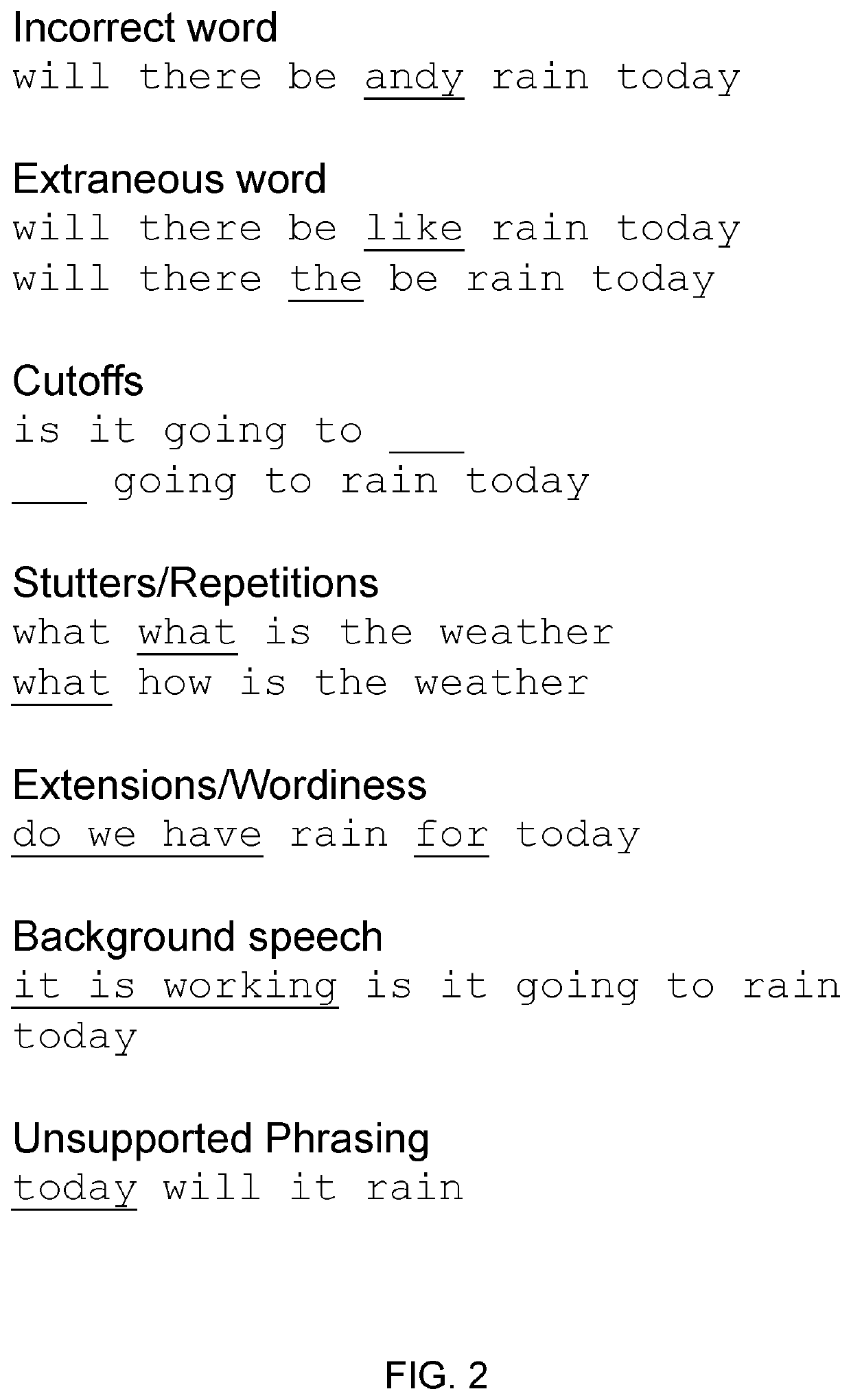Bidirectional probabilistic natural language rewriting and selection
a natural language and probabilistic technology, applied in the field of speech recognition and natural language understanding, can solve the problems of grammatically incorrect transcriptions, prone to errors in automatic speech recognition (asr), and inability to accurately predict speech, so as to improve the probability-based score of tokens, improve accuracy, and expand the coverage of relatively simple grammars
- Summary
- Abstract
- Description
- Claims
- Application Information
AI Technical Summary
Benefits of technology
Problems solved by technology
Method used
Image
Examples
Embodiment Construction
Introduction
[0078]A statistical language model (SLM) captures the statistics of neighboring words in a given corpus of expressions. Applying a SLM to token sequence hypotheses significantly improves the accuracy of ASR systems.
[0079]A forward SLM represents the conditional probability of the next token given one or a sequence of prior tokens. A backward SLM represents the conditional probability of an immediately prior token given one or a sequence of following tokens. Any given pair of tokens can have very different probabilities in each of the forward and backward direction. Consider the famous American baseball player, Joe DiMaggio. In a backward SLM, there is a very high probability that the word preceding DiMaggio is Joe because there are very few famous people with the family name DiMaggio. However, in a forward SLM the probability is fairly low for the word DiMaggio following the word Joe because there are many famous people named Joe.
[0080]Consider the famous leader during C...
PUM
 Login to View More
Login to View More Abstract
Description
Claims
Application Information
 Login to View More
Login to View More - R&D
- Intellectual Property
- Life Sciences
- Materials
- Tech Scout
- Unparalleled Data Quality
- Higher Quality Content
- 60% Fewer Hallucinations
Browse by: Latest US Patents, China's latest patents, Technical Efficacy Thesaurus, Application Domain, Technology Topic, Popular Technical Reports.
© 2025 PatSnap. All rights reserved.Legal|Privacy policy|Modern Slavery Act Transparency Statement|Sitemap|About US| Contact US: help@patsnap.com



